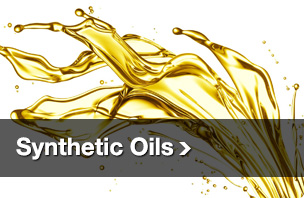At first glance, industrial oil formulations may not seem much different from those used in the automotive industry: they’re both combinations of base oils and additives used to lubricate machinery. However, the demands put on industrial machinery can vary widely, leading to a number of formulations to fit each unique circumstance.
Base Oils
While automotive oils can be anywhere from 65% to 85% base oil, industrial oils are typically over 90% base oil with some formulations as high as 99% base oil. Base oils are largely what determine the complete oil’s rate of oxidation, operating temperature range and viscosity performance.
The American Petroleum Institute (API) divides base oils into five groups.
Group I: Oils in this group are refined using solvents, keeping production costs low. They have less than 90 percent saturates, contain more than than 0.03 percent sulfur and have a viscosity index between 80 to 120. The temperature range for these oils is limited to 32 to 150 degrees F (0 to 65 C.). Once the dominant base oil in industrial applications, increased performance demands and tighter regulations have forced manufacturers to shift to different base oils.
Group II: These oils are more than 90 percent saturates, have less than 0.03 percent sulfur and, like Group I oils, have a viscosity index ranging from 80 to 120. These are usually manufactured by hydrocracking: this process breaks down long hydrocarbon chains in crude oil to make the finished oil more uniform. The higher saturation means these oils have greater oxidation resistance than Group I oils. Over half of all industrial oils used today use a Group II base oil as it offers the right balance between performance and price for most applications.
Group III: These oils have the same properties as Group II oils, except their viscosity index is above 120. To reach this performance, the crude oil undergoes more hydrocracking to better refine the oil.
Group IV: These oils are made out of polyalphaolefins (PAOs,) synthesized molecules that provide better performance than hydrocracked hydrocarbons. PAOs have a lower cloud point than other oils and are more resistant to oxidation than Group II and Group III oil.
Group V: These are non-mineral oils that don’t fall within the four previous classes. Biolubes, silicones, phosphate esters, and polyalkylene glycol (PAG) are the most commonly used oils in this class. These oils can be used on their own, but they’re usually mixed with mineral base oils for improved performance.
Addressing Problems with Lubricant Additives
Oxidation is the leading cause of oil degradation. Over time, oxygen can react with the base oil and additives to form acidic compounds which damage components. Heat accelerates this process, which means oils used in high heat applications need increased protection. Extreme pressure (EP) additives used in oils for high speed gear systems and metal cutting are particularly volatile, requiring extra protection to prevent the formation of acids. Higher quality base oils combined with antioxidant additives can reduce this process.
Next to oxidation, the biggest danger to lubrication is water contamination. Water can act directly on iron and steel, causing rust, while facilitating the contact between acids in the oil and metal surfaces. Water isn’t elastohydrodynamic like most oil formulations, which means it can be pushed away from high pressure areas leading to metal-to-metal contact. If boiled and forced into a low pressure area, the steam can cavitate, causing surface fissures.
There are several additives that can reduce the effects of water contamination. Rust inhibitors prevent rust from forming on ferrous metals, while metal deactivators form a protective layer on brass and copper to prevent reaction with acids. Demulsifiers help keep the water from mixing with the oil, allowing for easier separation.




